Can you Touch the Net in Volleyball? (Rules & Exceptions)

It’s a sunny afternoon, and two competitive volleyball teams are facing off on the sand.
The net is right in the middle, high and tight, like a line no one wants to cross.

Now, in this game, players spike and dig, and doing this, sometimes, they get close to that net.
Here’s where the situation gets interesting.
An outside hitter is up in the air, arms swinging, and that net is right there.
But as soon as he touches it, the whistle blows, and oops, it’s a no-go.
At this moment, there must be an important question in everyone’s mind.
Can you touch the net in volleyball? No, players cannot touch the net between the antennae while playing the ball or the antennae itself, as it is considered a fault. It is permissible only if it doesn’t affect the play.
This rule might seem small, but it’s as big as the game itself.
It keeps things fair and fun.
So, as we take a walk through this guide, I’ll tell you all about why this net touch rule matters and how it helps keep the game straight, just like the line in the sand.
What is a Net Touch in Volleyball?
A net touch occurs when a player’s contact with the volleyball net disrupts the ongoing play.
It happens particularly between the two antennas that mark the boundaries of the net.
It’s like crossing into a zone you’re supposed to avoid during a rally.
Remember the days when net rules were like a game of ‘Operation’?
Players could almost argue their way out of a fault.
“I swear, it was just the side of the net!” became a common refrain.
Now, the mantra is simple: “Stay away from the net, and we’re all good,” say modern volleyball referees, with a wink.
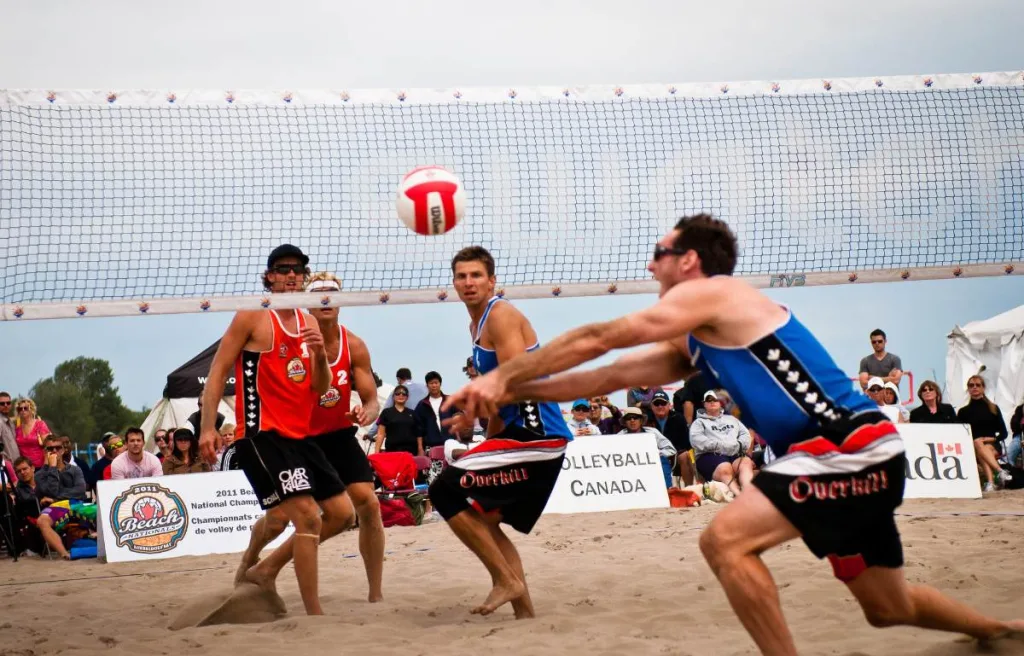
Historically, looking back at the NCAA Rulebook 2010, the approach to net violations was focused on the action around the net.
A touch was only wrong if you were actively playing the ball or stopping another player.
Unfortunately, I couldn’t find a download link for the FIVB Rulebook, 2010, to compare directly, as it is unavailable on their official site.
So, I am taking the NCAA’s Rulebook section 15.2.1, edition 2010, as our reference point for understanding the old rules.
Moreover, back then, players had a bit more freedom.
Touching parts of the net beyond the antennas was fair game as long as it didn’t give anyone an edge or interfere with the play.
Jump to today’s rules, which are about keeping the game’s spirit alive and kicking.
Now, a player’s touch with the net isn’t always a big deal unless it directly messes with the rally.
Volleyball Net Violation Rules
Volleyball is a sport where even minor violations can significantly impact the flow and outcome of the game.
One such aspect involves net violations.
Understanding these rules is crucial for both players and volleyball enthusiasts.
Before I dive into the specifics of net violations in volleyball, I recommend taking a moment to read my article on ‘Can You Block a Serve in Volleyball?‘.
It covers a similar area of the rules and will provide you with another perspective that’s key to grasping the game’s rules fully.
Now, with that context in hand, let’s explore the net violation rules outlined in the FIVB 2021-2024 Rulebook, specifically in section 11.4.4.
1) Touching the Net During Action of Play
It is the first rule of the net violation and, undoubtedly, the most common one that occurs during a match.
This violation occurs when a player touches the net between the antennae or the antenna itself while playing the ball.
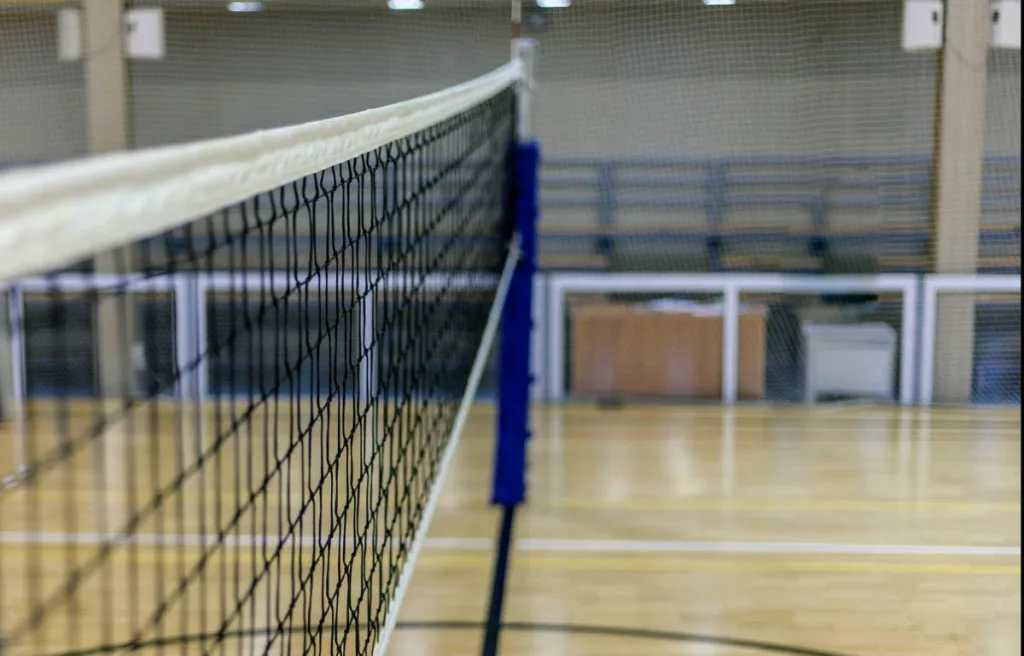
It’s essential to understand what the term “in the action of playing the ball” means in the exact wording of the FIVB rule.
This term refers to a scenario where players close to the ball attempt to interact with it.
It also includes any movement or attempt made in preparation to play the ball or in response to a play.
Some of the examples of “action of playing the ball” include:
Remember that the net isn’t just the mesh.
It also includes the top band and the top 80 cm of the antennae.
Any contact within this zone during a play can result in a net violation.
2) Using the Net as Support
According to the second clause of Rule 11.4.4, the players can’t use the net as a support or stabilizing aid.
It means that any contact with the net that appears to assist a player in gaining balance or leverage is a violation.
For example, it would be a net violation if you accidentally lean on or grab the net for support during a play, whether to maintain your balance or to push yourself up.
3) Creating Unfair Advantage
Any action that results in touching the net and subsequently creating an unfair advantage over the opponent is a violation.
Let me elaborate on it with a scenario.
Player A from one team goes to spike the ball and accidentally touches the net.
It causes the net to move.
Player B, from the other team, got distracted or confused by the moving net.
It prevents Player B from effectively blocking or hitting the ball.
So, why is it unfair?
Because player A’s touch on the net gave their team an advantage.
The moving net made it harder for Player B to play properly.
4) Hindering the Opponent’s Play
Actions that hinder an opponent’s legitimate attempt to play the ball are considered violations.
This rule ensures that the play remains fair and that no player interferes disproportionately with the opponents’ play.
For example, during a game, Player A jumps to block a ball but touches the net in the process.
This net contact slightly shifts the net towards the opponent’s side.
It hinders Player B’s ability to play the ball effectively of the opposing team.
5) Catching or Holding onto the Net
You may see this violation occurring more in beginner-level volleyball matches.
This rule elaborates that catching or holding onto the net during play is strictly prohibited.
During an intense rally, a player might unconsciously grab the net to steady themselves or attempt to play the ball.
Such actions are clear violations of the net rules.
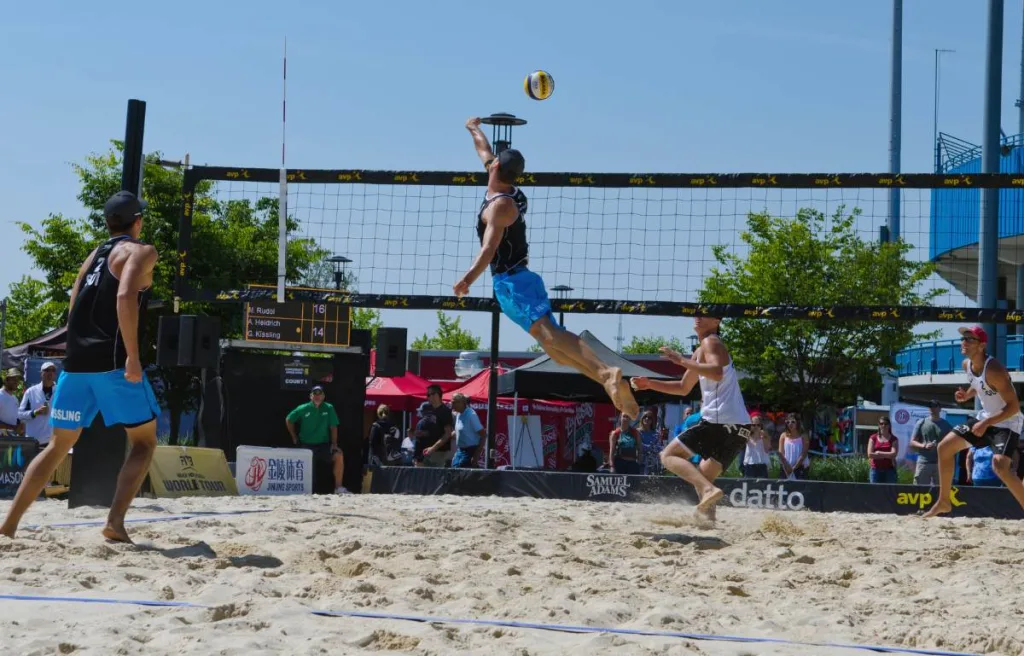
What is the Exception for Net Touch Rule?
In volleyball, not all net touches are considered faults.
This is particularly true regarding the area of the net outside the antenna.
According to the FIVB rulebook, touching the net outside the antenna during a game is not considered a fault.
It means that if a player touches the part of the net outside the antenna’s vertical plane during a rally, it’s not a violation.
The antenna serves as a boundary marker in volleyball.
Only the net between the antennas is part of the active play area.
Hence, net contacts outside this zone are treated differently.
In short, while being mindful of not touching the net within the antenna’s area, the players can move more freely at the net’s edges.
This understanding can be strategically important, especially in defensive plays near the net’s boundaries.
Consequences of Net Violation in Volleyball
The net violation in volleyball can significantly affect the game, both immediately and in terms of overall strategy.
The most immediate consequence of a net violation is the loss of the rally.
The team committing the violation loses the point, and the opposing team gets it.
Along with losing the point, if the violating team was serving, the sideout happened, and the opposing team got the chance to serve.
It can interrupt the momentum of the team that was serving.
Remember that a net violation, a standard rule infraction, does not directly lead to penalty cards.
However, a yellow card might be issued as a warning if a player displays unsportsmanlike behavior during a net violation.
It includes actions like arguing with the referee or reacting aggressively.
Can you Touch the Net in Beach Volleyball?
No, you cannot touch the net in beach volleyball, which is similar to indoor volleyball rules.
The main reason for this rule is to keep the net’s role central and fair in the game.
It ensures players don’t gain an unfair advantage or disrupt the game by interacting with the net.
The players can also play the ball out of the net during a volley and a serve.
It means that if the ball gets caught in the net, players can still attempt to play it without being considered a fault.
Unlike indoor volleyball, in beach volleyball, moving under the net to the other side of the court is not a violation.
However, this is only acceptable if it doesn’t interfere with the opposing team’s play.
This rule differs from indoor volleyball and acknowledges the unique nature of the beach game.
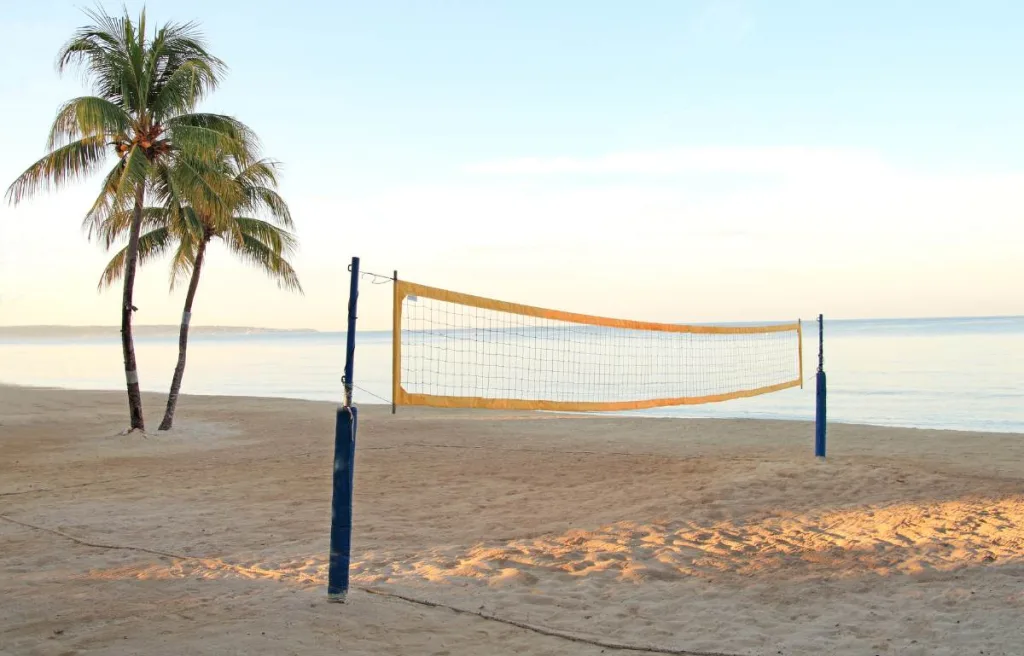
Does Hair Count as Net Touch in Volleyball?
No, hair does not count as net touch in volleyball, as it is usually not seen as a violation.
The rules are more concerned with parts of the body or uniform that actively impact the game.
Since hair doesn’t typically give any significant advantage or disrupt play, it’s not counted as a violation.
However, it’s important to remember that specific leagues or seasons might interpret this differently.
Always check the rules of the event you’re in to be sure.
Referee Hand Signal for Net Violation
When a net violation occurs, the referee indicates the fault using a specific hand signal.
According to Section 19 of the “Referee’s Official Hand Signals” in the FIVB rulebook, the referee must signal a net touch violation by indicating the relevant side of the net.
The referee does it by using his corresponding hand.
For instance, if the violation is on the left side of the net, the left hand of the referee signals the fault.
Conversely, the referee uses his right hand if the violation is on the right side.
This hand signal helps players, coaches, and spectators quickly understand which team has committed the violation.
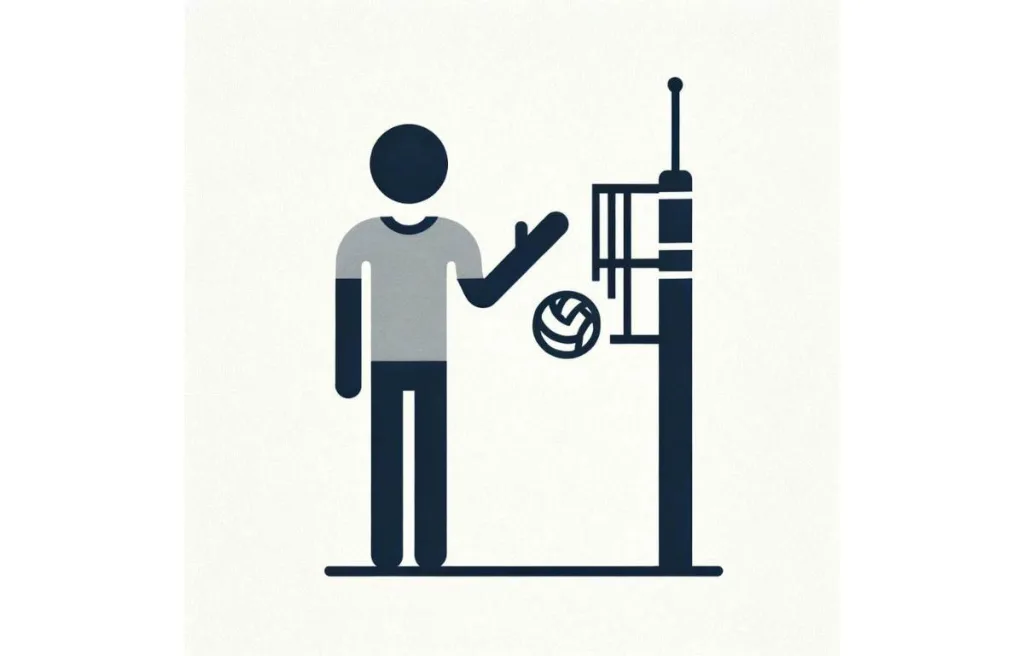
Conclusion
As my final remarks, I would emphasize that without proper knowledge of the volleyball rules and violations, you really can’t enjoy the game, whether you are a player, coach, or a fan.
The FIVB rulebook clearly outlines these rules and the responsibilities of referees in enforcing them.
As a player, it’s essential to prioritize avoiding contact with the net first.
It not only helps in avoiding faults but also in maintaining the flow and integrity of the game.
The referee ensures fair play by accurately identifying net violations and using official hand signals to communicate these faults to everyone involved.
By respecting these rules and understanding the role of the referee, players can focus on their skills and strategy, contributing to their team’s success.
